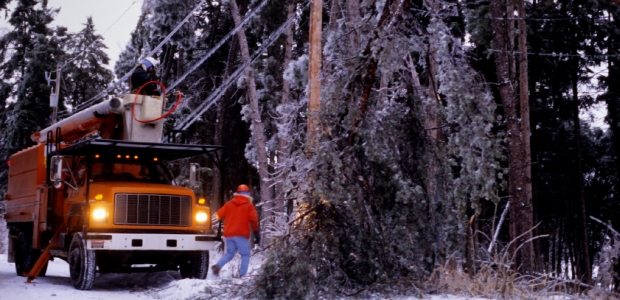
NIOSH, NWS Offer Cold Weather Tips
After a winter storm dumped heavy snow on Minnesota and brought high winds and plummeting temperatures to the Midwest, both agencies posted reminders about staying safe in cold conditions.
NIOSH has posted a resource-filled page to help outdoor workers protect themselves from cold stress, including hypothermia, frostbite, and cold water immersion. The National Weather Service posted guidance for interpreting its weather advisories, watches, and warnings bulletins and offered tips for safe driving.
"When exposed to cold temperatures, your body begins to lose heat faster than it can be produced. Prolonged exposure to cold will eventually use up your body's stored energy. The result is hypothermia, or abnormally low body temperature. A body temperature that is too low affects the brain, making the victim unable to think clearly or move well. This makes hypothermia particularly dangerous because a person may not know it is happening and will not be able to do anything about it," NIOSH's page explained It lists early and late hypothermia symptoms and the correct first aid measures for a worker with hypothermia:
- Alert the supervisor and request medical assistance.
- Move the victim into a warm room or shelter.
- Remove their wet clothing.
- Warm the center of their body first-chest, neck, head, and groin-using an electric blanket, if available; or use skin-to-skin contact under loose, dry layers of blankets, clothing, towels, or sheets.
- Warm beverages may help increase the body temperature, but do not give alcoholic beverages. Do not try to give beverages to an unconscious person.
- After their body temperature has increased, keep the victim dry and wrapped in a warm blanket, including the head and neck.
- If victim has no pulse, begin cardiopulmonary resuscitation.
The NWS page quotes meteorologist John Koch: "Thousands of people die every year in weather-related traffic accidents. The best way to avoid a tragedy is to be aware of weather conditions and limit travel when hazardous weather conditions exist." NWS advises motorists to do the following before driving in winter weather conditions, especially if the National Weather Service has issued warnings or watches in your area:
- Keep the gas tank full to keep the fuel line from freezing.
- Let someone know your destination, route, and when you expect to arrive.
- Keep a cell phone or other emergency communication device with you.
- Pack your car with thermal blankets, extra winter clothes, basic tool kit, (including a good knife and jumper cables), an ice scraper and shovel, flashlights or battery-powered lanterns with extra batteries, and high calorie, nonperishable food and water.
- Use sand or kitty litter under your tires for extra traction, especially if you find yourself stuck in a slippery spot.